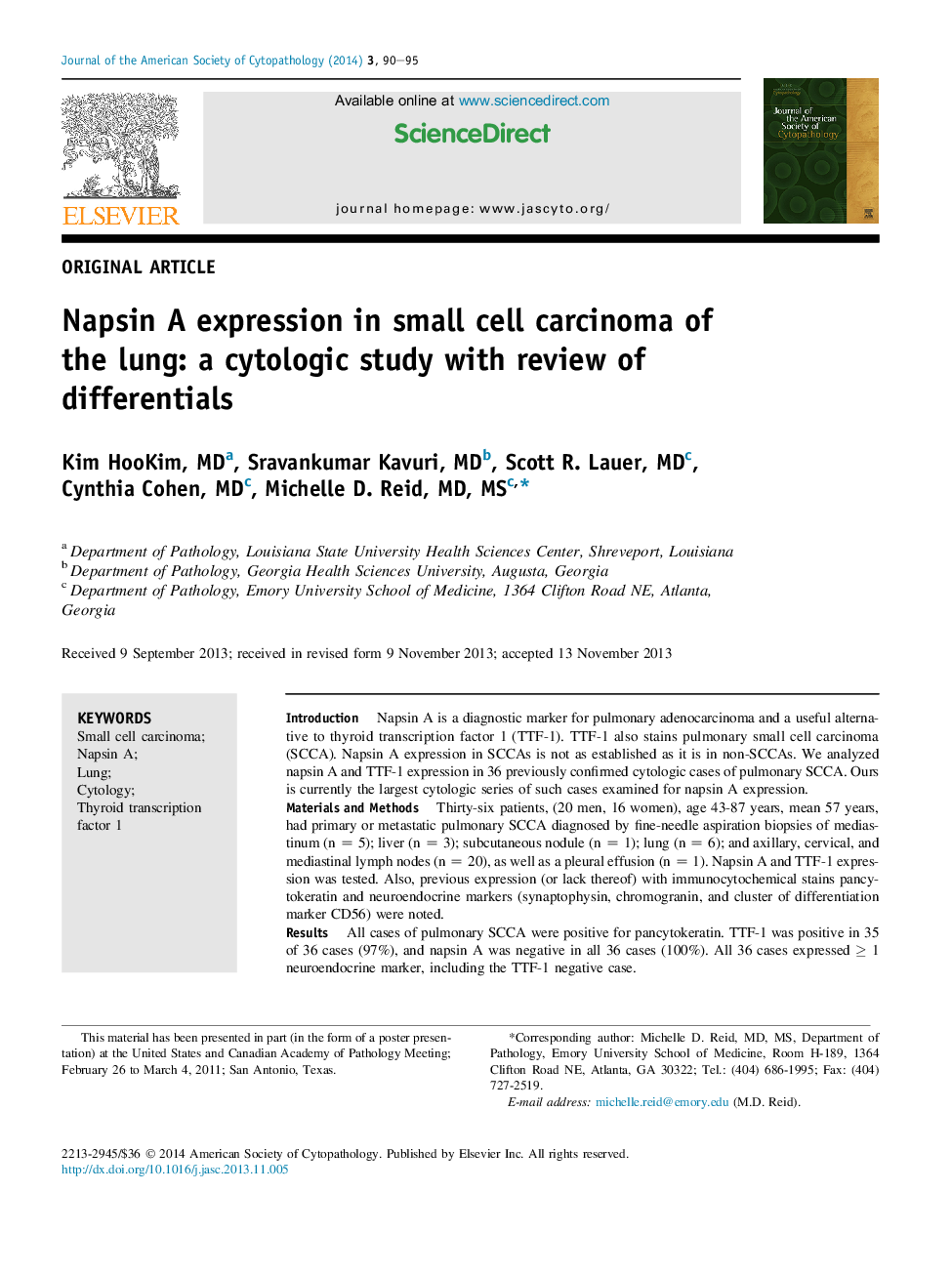| کد مقاله | کد نشریه | سال انتشار | مقاله انگلیسی | نسخه تمام متن |
|---|---|---|---|---|
| 2776647 | 1567946 | 2014 | 6 صفحه PDF | دانلود رایگان |

IntroductionNapsin A is a diagnostic marker for pulmonary adenocarcinoma and a useful alternative to thyroid transcription factor 1 (TTF-1). TTF-1 also stains pulmonary small cell carcinoma (SCCA). Napsin A expression in SCCAs is not as established as it is in non-SCCAs. We analyzed napsin A and TTF-1 expression in 36 previously confirmed cytologic cases of pulmonary SCCA. Ours is currently the largest cytologic series of such cases examined for napsin A expression.Materials and MethodsThirty-six patients, (20 men, 16 women), age 43-87 years, mean 57 years, had primary or metastatic pulmonary SCCA diagnosed by fine-needle aspiration biopsies of mediastinum (n = 5); liver (n = 3); subcutaneous nodule (n = 1); lung (n = 6); and axillary, cervical, and mediastinal lymph nodes (n = 20), as well as a pleural effusion (n = 1). Napsin A and TTF-1 expression was tested. Also, previous expression (or lack thereof) with immunocytochemical stains pancytokeratin and neuroendocrine markers (synaptophysin, chromogranin, and cluster of differentiation marker CD56) were noted.ResultsAll cases of pulmonary SCCA were positive for pancytokeratin. TTF-1 was positive in 35 of 36 cases (97%), and napsin A was negative in all 36 cases (100%). All 36 cases expressed ≥ 1 neuroendocrine marker, including the TTF-1 negative case.ConclusionsThis study showed napsin A was negative in all pulmonary SCCAs. This stain may prove to be a useful exclusionary marker in distinguishing pulmonary SCCA from other poorly differentiated lung carcinomas with similar morphologic features, especially those with concomitant TTF-1 expression.
Journal: Journal of the American Society of Cytopathology - Volume 3, Issue 2, March–April 2014, Pages 90–95